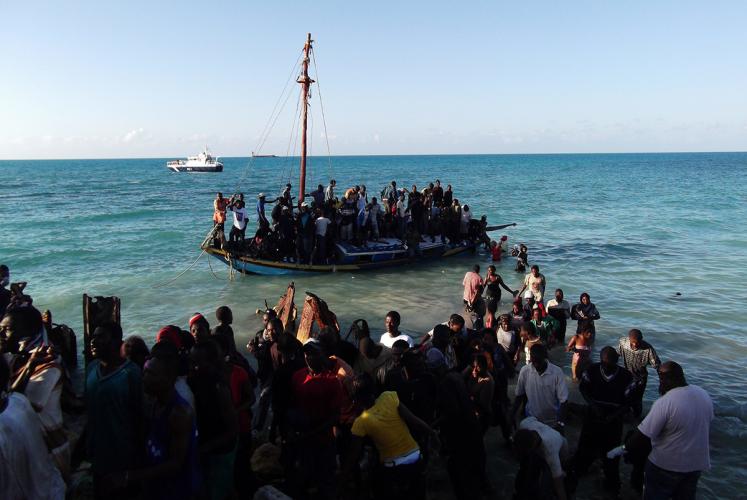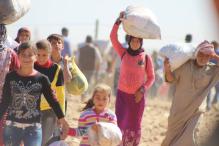The potential for migration to contribute to human development and deliver on the UN’s Sustainable Development Goals remains an important yet contested effort, due to how (and by whom) these issues are framed. The Global Compact for Safe, Orderly and Regular Migration (GCM) is a necessary step in ensuring that the potential for migration to facilitate human development can be realized. However, for many nations in the Global South, tapping into this potential remains elusive. Policymakers, researchers, advocates, and other stakeholders disproportionately focus on South-North migration, interrogating processes such as inequality by comparing origin countries in the South against host countries in the North. However, global inequalities are often reflective of regional and local systems of inequalities and inequities, the root causes of which have largely gone unaddressed. Migrants are profoundly shaped by inequalities experienced at home that persist throughout the migratory process.
The changing nature of intersectional inequalities and migration
We know that under the right circumstances, the potential for migration to contribute to human development is significant. However, due to entrenched and complex vulnerabilities – resulting from social exclusion, extreme poverty, climate-related disasters, wars, human rights abuses, and violence – some populations in the Global South are stuck in communities depleted of conditions for a humane life. Such inequalities determine who is (and is not) able to migrate and on what terms. They dictate who migrates formally or informally as well as the financial, social, and emotional costs of doing so, and often condemn those with the least options to inconceivably treacherous journeys across land or sea. Some trek for miles, transiting through multiple countries including jungles, deserts, and communities that have built entire economies on the tenacity and desperation of migrants. Others take to the sea on vessels filled well beyond capacity or makeshift boats, hoping to make it safely to the other side.
Significant attention is paid to the often-perilous journeys embarked upon by migrants and the various forms of abuse, exploitation, and injustices they often experience. However, our Migration for Development and Equality (MIDEQ) studies suggest that we should place equal attention on the path dependency created by the societies and countries of origin. Inequalities often originate in the homeland where migrants are exposed to systematic abuse and exploitation. This state of vulnerability follows them across migrant trails, where they remain unprotected by their own government and exposed to abuses abroad. In such cases, migration is not necessarily the source of inequalities but serves to exacerbate them. Haiti, in many ways, epitomizes this continuum of intersectional inequalities and inequities. This phenomenon ensnares Haitian migrants as they circulate throughout the Americas, from Haiti through South and Central America to the US-Mexico border and, in some cases, back to Haiti again.
In the aftermath of the 2010 Haiti earthquake, many young Haitians have engaged in circulatory migration that has taken them to and through various countries in Latin America. Some have settled in Brazil and Chile, while others have continued north toward the US. In these relatively new migration routes, Haitian migrants carry their path dependency to transit and destination countries where they face systemic vulnerability compounded by unequal access to rights, services, and social protection. To advocate for “Safe, Orderly and Regular Migration” as the GCM does, civil society organizations and State actors must reconcile the fact that migrant vulnerabilities in foreign nation-State borders are profoundly linked with the ones that shaped their living conditions at home.
Despite foreign engagement in Haiti for three decades, we have witnessed the accelerated deterioration of Haiti’s security and rule of law institutions. The country has suffered from gang wars, kidnappings, sexual violence, and rampant impunity. Educated youths, the human talent Haiti should invest in and rely upon to rebuild its institutions, are either living, working, or studying abroad. Others can be found on migrant trails in communities in Colombia, Panama, Mexico, Brazil, Ecuador, Bolivia, Chile, Uruguay, and the Dominican Republic, in search of a better life. If we truly aim to make migration safe, orderly, and regular, we need to commit to understanding the experiences that compel migrants to risk everything - including their lives - to leave home.
The need for migrant-centered evidence
Safe, orderly, and regular migration is only possible if we understand migrant experiences in their totality. These experiences are more than statistics, trends, and modelling: we must place migrants at the core of our methodologies and theories. Research within the MIDEQ Hub allows us to examine the potential of migration to contribute to development, specifically the delivery of the Sustainable Development Goals by centring migrants’ multidimensional experiences, their voices and concerns, at the core of knowledge production on migration and vulnerabilities.
Objective 1 of the GCM focuses on the need to “Collect and utilize accurate and disaggregated data as a basis for evidence-based policies.” But accuracy and disaggregation should go beyond quantitative analysis. Our research must capture migrant histories, should contain contextual analysis of the structural forces that shape their experiences, include responses to challenges, and document migrant initiatives in the context of transit migration.
MIDEQ’s work illustrates how increasing inequalities across the Global South accelerated by political, economic, social, and/or climate crises in a wide range of countries have set the stage for emerging migration trails, some more dangerous than others. At the same time, we cannot ignore that the circulatory movements of migrants in some contexts have given rise to unique interactions with local communities along these migration trails. Therefore, it is also important to understand the impact of circulatory migration on the communities through which migrants transit. The documentation of community-based solidarities and on-the-ground institutional support systems will help identify locally-driven efforts while facilitating a deeper understanding of what forms of community-based migrant protections are viable and scalable.
Addressing and reducing vulnerabilities at home and abroad
Migrant vulnerability often begins at home, signaling to governments and communities in the destination country that migrants are unprotected and can be exploited. UN Member States have committed to promoting a humanistic and constructive public discourse on migration. This is a commitment that would help reduce injustices, and combat violence, racism, xenophobia, and other forms of intolerance against all migrants, conforming with international human rights law. Yet, our research reveals targeted laws and policies that disadvantage specific migrant groups, including changes to visa requirements for migrants from certain countries and exorbitant fees through transit countries.
Any effort to make good on the GCM will require a more comprehensive approach to migration. Member States must invest in developing democratic spaces that transform State institutions into rights-based instruments that protect citizens at home. Such initiatives will serve as a catalyst for migrant protection efforts abroad. This more holistic orientation is consistent with migrants’ rights advocacy efforts and aligns with the greater aims of the GCM. With respect to the current state of affairs in Haiti, this broader perspective would compel Member States and other institutional stakeholders to support governance reforms across all sectors, particularly security, justice, and rule of law. However, we must also move away from top-down approaches that exclude the very constituents we profess to serve. This requires that we embrace participatory approaches that include migrants’ voices and experiences as well as local community perspectives and engagement. By examining migrant protection as an extension of citizen protection, new engagements in the homeland will emerge that can reduce the vulnerability of migrants in transit, at destination and for their loved ones at home.
Suggested citation: Louis Herns Marcelin, Toni Cela., "Migrant Vulnerability and Structural Inequalities: The Case of Haiti," UNU-CPR (blog), 2022-06-28, https://unu.edu/cpr/blog-post/migrant-vulnerability-and-structural-inequalities-case-haiti.





